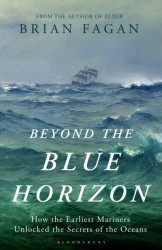
Movie review: The Lost Daughter
by Howard Adelman
The Lost Mother is not the name of the movie. It is called The Lost Daughter. Maggie Gyllenhaal offers audiences one of the most outstanding films of last year with the adaptation of Elena Ferrante’s 2006 novel. Gyllenhaal’s directorial debut is nuanced, incisive and uses the cinematic grammar of a top director with 20-30 years of experience. The pacing and pausing directly evoke the ambiguity that permeates the movie.
Go see the film; it has been streaming on Netflix since 31 December. Do not read this review until you do. For there are too many spoilers.
The performance of 48-year-old Leda by Olivia Colman (Jessie Buckley plays her twenty-year younger self) is simply superb. In fact, both performances are excellent. Since the two are physically quite different looking that a twenty-year difference could not disguise, it is also the more remarkable that I, and no one I spoke to, had any difficulty accepting that the two were the same person at two different stages of one life. This fits in with a movie theme – do not trust appearances and impressions; it is the deeper psychological factors that establish identity – attitudes, intentions, how one handles emotions and how the body language of both point to an identical psychic make-up. This is particularly difficult to pull off when we only have a partial glimpse of an ambiguous inner self.
Leda in William Butler Yeat’s 1926 sonnet, “Leda and the Swan,” adopts the name Leda from Greek mythology as the mother of all of humanity, the product of intercourse with all the mighty gods – Zeus, Jupiter, et al, who appear to her deceptively as swans and rape her. Progeny include the beautiful Helen of Troy who is the “cause” of the great calamity of the ancient world, the Trojan War. Fate is born in disguise and the result is both violence and indifference.
How unlike the Torah where mankind is a result of the war between earthly lust and intellectual abstraction. In the novel and the film, the root problem is steeped in Hebraic rather than Greek mythology. The Greek origins of Leda, like much of the remaining content of the film, offers only a set of distractions and false clues. If we follow them, we will never discover the ambiguity of this amalgam of Adam and Eve as the virgin mother of humanity. And the roots of the inhumane!
Leda and the Swan
A sudden blow: the great wings beating still
Above the staggering girl, her thighs caressed
By the dark webs, her nape caught in his bill,
He holds her helpless breast upon his breast.
How can those terrified vague fingers push
The feathered glory from her loosening thighs?
And how can body, laid in that white rush,
But feel the strange heart beating where it lies?
A shudder in the loins engenders there
The broken wall, the burning roof and tower
And Agamemnon dead.
Being so caught up,
So mastered by the brute blood of the air,
Did she put on his knowledge with his power
Before the indifferent beak could let her drop?
Rape is not the backdrop of The Lost Daughter.
I call the review The Lost Mother because that is what I think the movie was really about. Discovering that primal mother. But I am not sure. It is rare that I am left so perplexed by a film that I consider great. But I am. And I want to tell you why. It may have something to do with one of the themes of the film – female acuity versus male obtuseness. As a male, I suspect that I was not alone in my puzzlement for, as Leda in the novel says, "The hardest things to talk about are the ones we ourselves can't understand.” Yet Leda recognizes that she, herself is “a very selfish person.” It is also a movie focused on body language for, as Leda says at one point, "The unspoken says more than the spoken." But it is Leda who repeatedly misinterprets the unspoken. Yet we, in the audience, are repeatedly and endlessly exposed to the close-up so that we are put off balance by the absence of a frame as the characters exude emotions with every slightest inflection.
The movie takes place on an unnamed Greek island – except it is the one on which Leonard Cohen made his home for years, Hydra, his second home rather than his first for he could never leave the Hallelujah chorus of his Jewish birth in Montreal behind. It was the home of his muse, the Norwegian Marianne Ihlen, for whom he wrote the masterpiece, So Long. Marianne, his own complicated lyric of abandonment.
In Greek mythology, Hydra is the child of Typhon (think typhoon) and Echnida, a monster half-woman and half-snake, the mother of most of the monsters that populate the Greek mythos. Hydra is a gigantic poisonous water-snake with nine heads. Cut off one head and two heads grow in its place. Hydra or hydra-headed connotes an ambiguous and multifarious dimension of existence.
However, in Hebraic mythology, the snake is not female, but the masculine penis objectified and detached as the male conceives of himself as divine, as pure mind detached from body and responsible for creating the world with words and language. Leda is a translator, a translator of one mythology into another and herself a hybrid creature: female with powerful maternal instincts and male with a cold indifference to the irritating progeny she breeds in favour of enlightened intellectual pursuits.
The first verses of the lyrics of Leonard Cohen’s ode to Hydra, Moving On, are about our inability to move on, our incapacity to leave the past behind.
I loved your face, I loved your hair
Your T-shirts and your eveningwear
As for the world, the job, the war
I ditched them all to love you more
And now you're gone, now you’re gone
As if there ever was a you
Who broke the heart and made it new
Who's moving on, who's kidding who
I loved your moods, I loved the way
They threatened every single day
Your beauty ruled me, though I knew
’Twas more hormonal than the view
And now you're gone, now you're gone
As if there ever was a you
Queen of lilac, Queen of blue
Who's moving on, who's kidding who
Hydra as a Greek resort island is a recreational retreat. But looks can be deceiving. For what we experience is not a place of beautiful calm waters and a warm sea, but a seething cauldron of cross currents with a powerful undertow. What appears peaceful and refreshing can really be turbulent and dangerous. And ditching a life of responsibilities does not have to be done for love and enchantment of another. Intellectual life has its own allure. So does basic sexual attraction.
Leda is a professor of comparative literature in Cambridge (US), near Boston – hence Harvard. (In the novel, the location is Florence.) She is on vacation – a working holiday (?) – by herself looking forward to a quiet period of reading, writing and relaxing. She is a Brit translating a book from English into Italian and looks down upon the crudeness, crassness and unruliness of the Greek (Italian in the book) family sharing the beach and dominated by a pregnant Callie (Dagmara Domińczyk). Leda is a loner and an outsider. Nina (Dakota Johnson) is a mother with a young daughter who belongs to the extended Greek family. Nina’s attraction to and identification with Leda proves that Leda is not as alien as she appears even as she endures rather than engages in conversation with Nina.
The key event takes place as Leda watches Nina interacting with her daughter as well as the rest of her family. In the novel, both Leda and Nina are originally from Naples and have clearly moved up in the world, though in very different directions. In the movie, this dimension of class is hinted at because Nina is from the New York borough of Queens and suspects Leda, from her accent, may be as well. But that allusion to a common past went way over my head because I could not imagine Leda with her clipped English accent having even a hint of borough New York in her voice.
The daughter goes missing – to the consternation of the whole extended family. Leda seems to know where to look for her and finds her, returning her – to her mother’s overwhelming relief.
But it is Leda who is really missing. And has been all her life. Not only Leda. Many of the characters are escape artists from life. Ed Harris, Lyle the caretaker, fled his responsibilities almost three decades earlier; but surprisingly, we don’t hold him in contempt. Is it because he is currently presented as a caring and considerate individual while Leda, in stealing the little girl’s doll (I did offer a spoiler alert), proves she is beyond redemption even though she, unlike Harris, returned to resume her responsibilities and continued to have a close relationship with her children? After all, as children, the girls had a very physical relationship with their mother – wanting to touch her, caress her, press flesh upon flesh. In contrast, Nina escapes the insensitive arms of her handsome husband into the arms of a young Australian lad in a less dramatic act than the young female academic, Leda, who absconded from her family and abandoned her two daughters many years earlier.
When Leda capriciously steals the girl’s doll, it is absolutely unexpected. The child is beside herself. Distraught, crying – nothing the mother does can ease her daughter’s pain at the loss. Nina must endure a week of tantrum and tears emanating from her daughter. Leda witnesses this all but is unmoved. She is pitiless. The scene is extremely painful to watch, indeed harrowing as much from its unpredictability. Why? Why so cold-hearted? Why so callous? Why so cruel? The mystery is not that she was the thief but why?
My youngest daughter offered me an explanation in terms of Freudian object displacement, “an unconscious defense mechanism whereby the mind substitutes either a new aim or a new object for goals felt in their original form to be dangerous or unacceptable.” Leda has projected her whole psyche onto that doll, all the trauma of being a mother and sacrificing one’s personal life to the responsibility of caring for and raising a child. The accompanying jazz-blues score by Affonso Gonçalves captures the rapid changes in mood and mania of Leda’s shifting emotional states.
However, isn’t the movie simply a story of a self-centred female unwilling to assume the requisite sacrifices of motherhood? As such, isn’t she in the end repulsive in general and most especially for the theft of the doll even more than deserting her daughters at a young age for several years? But the movie not only reveals her irritability, her taut desperation, overwhelmed and frazzled by motherhood – and her deep frustration, but also her loving and inventive devotion.
Leda’s alter ego, Nina, the mother of the little girl who gets lost and whose doll is stolen, is also desperate and distracted, but not by the lures of an intellectual life, but by sex with a younger man when her husband is such a macho oaf. In contrast, Olivia Colman’s brooding passion never gets beyond flirtation with both the older Ed Harris, the caretaker, or the younger Australian tourist.
Leda and Nina are two peas in the same pod, but such different peas. Nina, like her namesake in Anton Chekhov’s The Seagull, can say, “In me is the spirit of the great Alexander, the spirit of Napoleon, of Caesar, of Shakespeare, and of the tiniest leech that swims. In me the consciousness of man has joined hands with the instinct of the animal; I understand all, all, all, and each life lives again in me.” Leda would rewrite these words and insist that instinct dies rather than lives within her, for the consciousness of man lives in her schizophrenically divided from her maternal consciousness as a woman.
So what is the problem? My dislike, indeed, condemnation of Leda is understandable. But where was my empathy. Sometimes it peaked out of my heart, got caught up in my throat and welled up in my tears. But they never flowed for Leda. The disgust at what she had done to the little girl whose doll she stole and her own daughters was too great.
Do you have to be a woman to fully empathize with such an ultimately repulsive character? Am I just an old-fashioned war horse intolerant of “non-natural” mothers? Is Leda simply taboo for me so that I want to lash out rather than commiserate? The movie even anticipates this response by differentiating between the language used by women to communicate and the inability of men to understand that language of imperceptible gestures, side glances and surly lips.
Originally published on howardadelman.com









